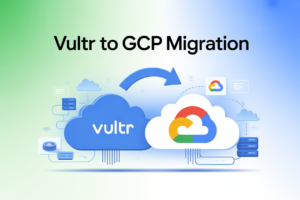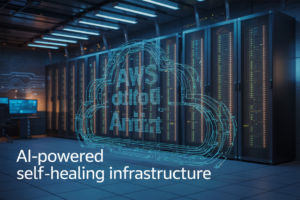Building web applications on AWS can seem overwhelming for developers and tech managers new to cloud platforms. This guide breaks down the journey from initial planning to production deployment, helping you avoid common pitfalls and build scalable, secure applications. We’ll cover AWS architecture planning strategies and DevOps implementation techniques that streamline your development workflow.
Understanding AWS Cloud Fundamentals
Key AWS Services for Web Applications
Building on AWS? You need to know which tools will make your life easier.
First up, EC2 – your virtual server in the cloud. Need computing power? EC2’s got you covered. Pair it with S3 for storage that scales without breaking a sweat.
For databases, you’ve got options. RDS handles your traditional SQL needs while DynamoDB takes care of NoSQL workloads. Both manage the boring stuff like backups and scaling so you can focus on your app.
Then there’s Lambda – the serverless superhero. Write your code, deploy it, and AWS handles everything else. No servers to manage. No capacity planning headaches.
Don’t forget Elastic Beanstalk – perfect if you want AWS to handle deployment, scaling, and monitoring while you just upload your code.
Cost Management Strategies for Cloud Resources
The cloud bill shock is real. I’ve been there.
Start with AWS Cost Explorer – it shows exactly where your money’s going. Tag your resources properly (thank me later) to track which projects or teams are spending what.
Savings Plans and Reserved Instances can slash your EC2 costs by up to 72% if you commit to usage terms. For unpredictable workloads, Spot Instances offer massive discounts.
Turn stuff off when you’re not using it. Dev environments don’t need to run 24/7. Set up auto-scaling to match resources with actual demand instead of provisioning for peak loads.
AWS Budgets lets you set alerts before costs spiral out of control. Trust me, your finance team will love you for this.
AWS Global Infrastructure Benefits
AWS spans 84 availability zones across 26 geographic regions. That’s not just a flex – it’s your secret weapon.
This massive footprint means you can deploy your app close to your users for lightning-fast load times. Your US-based app can still feel snappy to users in Sydney or Singapore.
Their redundant design means even if an entire availability zone goes down (rare, but it happens), your app stays up if you’ve designed it right.
Content delivery is a breeze with CloudFront, AWS’s CDN that caches your content at edge locations worldwide. Your static assets load in milliseconds, not seconds.
Need to comply with data residency laws? No problem. Deploy in the regions that meet your regulatory requirements without sacrificing performance.
Security Basics for AWS Deployments
Security in AWS isn’t optional – it’s essential. But where to start?
IAM (Identity and Access Management) is your foundation. Follow the principle of least privilege: give users and services only the permissions they absolutely need. Use IAM roles for services instead of hardcoding credentials.
Encrypt everything – data at rest with services like KMS, and data in transit using TLS. No exceptions.
VPCs (Virtual Private Clouds) let you isolate your resources in a private network. Use security groups and network ACLs as your firewall – they’re your first line of defense.
Enable AWS CloudTrail to log all API calls. When something goes wrong (and something always does), you’ll thank yourself for having these logs.
Run AWS Config and Security Hub to continuously audit your environment against best practices. They’ll catch configuration drift before it becomes a security nightmare.
Planning Your AWS Web Application Architecture
A. Selecting the right compute services (EC2, Lambda, or Fargate)
Picking the right compute service can make or break your AWS web app. It’s not one-size-fits-all.
EC2 is your Swiss Army knife – full control over everything. Great when you need specific OS configs or legacy apps that need special treatment. But remember, you’re on the hook for patching, scaling, and maintenance.
Lambda is the opposite end – zero server management. Write code, upload, done. Perfect for APIs, data processing, and event-driven workloads. The catch? 15-minute runtime limit and cold starts can be a pain.
Fargate sits in the middle – container-based but without server management headaches. You get containerization benefits without EC2 management overhead. Ideal for microservices architectures.
Here’s a quick comparison:
| Service | Best For | Limitations |
|---|---|---|
| EC2 | Full control, specialized workloads | You manage everything |
| Lambda | Event-driven, short processes | 15-min limit, cold starts |
| Fargate | Containerized apps, microservices | Higher cost than EC2 |
B. Database options comparison (RDS, DynamoDB, Aurora)
The database you choose impacts everything from performance to how much sleep you get at night.
RDS gives you managed relational databases – MySQL, PostgreSQL, SQL Server, etc. It handles backups, patching, and replication. Perfect if you need ACID compliance and structured data.
DynamoDB is AWS’s NoSQL powerhouse. Need to scale horizontally with consistent single-digit millisecond performance? This is your pick. It shines for high-traffic web apps with predictable access patterns.
Aurora is PostgreSQL/MySQL-compatible but supercharged. It’s 5x faster than standard MySQL and 3x faster than PostgreSQL. You get the familiarity of relational databases with cloud-native performance.
| Database | Type | Sweet Spot |
|---|---|---|
| RDS | Relational | Traditional apps needing ACID |
| DynamoDB | NoSQL | High-scale, low-latency needs |
| Aurora | Relational | Performance-critical MySQL/PostgreSQL |
C. Storage solutions for different application needs
AWS storage isn’t just about picking S3 and calling it a day.
S3 is the obvious choice for static assets – images, videos, documents. It’s virtually unlimited, highly durable, and dirt cheap. Perfect for user uploads and public content.
EBS works like a hard drive for your EC2 instances. Need persistent storage that’s fast and tied to specific instances? That’s EBS territory. Great for databases and apps that need low-latency local storage.
EFS provides shared file storage that multiple EC2 instances can access simultaneously. Think of it as network storage for your cloud resources. Ideal for content management systems and shared app configurations.
For caching and temporary storage, ElastiCache reduces database load by caching frequent queries. S3 Glacier works great for archival data you rarely access but need to keep.
D. High availability and fault tolerance design principles
Cloud apps fail. The trick is making sure your users never notice.
Multi-AZ deployments are your first defense line. By spanning multiple Availability Zones, you protect against datacenter failures. For critical apps, spread across multiple regions too.
Auto-scaling groups keep your application responsive during traffic spikes and heal themselves when instances fail. Pair this with load balancers to distribute traffic evenly.
Database redundancy is non-negotiable. Use RDS Multi-AZ, DynamoDB global tables, or Aurora’s storage replication to ensure data survives failures.
Some practical patterns to implement:
- Circuit breakers to prevent cascading failures
- Queues to handle traffic spikes
- Stateless application design whenever possible
- Data replication across regions for critical information
E. Scalability considerations for growing applications
Today’s small app is tomorrow’s big problem if you don’t plan for growth.
Horizontal scaling (adding more instances) typically works better than vertical scaling (bigger instances). Design your architecture to scale out, not up.
Implement caching at multiple levels – browser caching, CDN (CloudFront), application caching (ElastiCache), and database query caching.
Decouple components using SQS, SNS, or EventBridge. This prevents one busy component from bringing down the entire system and allows independent scaling.
Database scaling requires special attention. Consider read replicas for RDS/Aurora to handle read-heavy workloads. For DynamoDB, proper partition key design is crucial to avoid hot partitions.
Finally, embrace serverless where it makes sense. Services like Lambda, API Gateway, and DynamoDB can automatically scale to zero when idle and handle massive traffic spikes without pre-provisioning.
Setting Up Your Development Environment
AWS account configuration best practices
Setting up your AWS account correctly from day one saves headaches down the road. Trust me on this one.
First, enable multi-factor authentication (MFA) for your root account immediately. I’ve seen teams scramble after security breaches that could’ve been prevented with this simple step.
Create separate AWS accounts for different environments:
- Development
- Testing
- Production
This isolation prevents that terrifying moment when a development script accidentally wipes out production data. Been there, seen that disaster unfold.
Set up AWS Organizations to manage these accounts centrally. You’ll get consolidated billing (your finance team will thank you) and organization-wide policies.
Enable AWS CloudTrail across all accounts. When something breaks at 3AM, you’ll need those logs to figure out what happened.
IAM user management and permission strategies
The principle of least privilege isn’t just security jargon – it’s your safety net.
Create IAM groups based on job functions (developers, testers, admins) and assign permissions to groups, not individual users. When your new developer starts, you’ll just add them to the right group. Done.
Permission boundaries are your friend. They set the maximum permissions a user can have, preventing accidental escalation.
For service-to-service communication, always use IAM roles instead of hard-coded credentials. Nothing worse than finding AWS keys committed to GitHub.
Review permissions regularly. Use AWS Access Analyzer to identify resources shared with external entities. You’d be surprised what gets exposed over time.
AWS CLI and SDK installation and configuration
The AWS CLI is your command center. Install it with:
pip install awscli
Then run:
aws configure
You’ll need your access key, secret key, default region, and output format. Store multiple profiles when working across accounts:
aws configure --profile development
aws configure --profile production
For programmatic access, choose the SDK matching your language:
| Language | Installation |
|---|---|
| Python | pip install boto3 |
| JavaScript | npm install aws-sdk |
| Java | Add Maven/Gradle dependency |
Set up named profiles in your ~/.aws/credentials file to switch contexts easily. Your future self will appreciate this organization.
Infrastructure as Code tools (CloudFormation, CDK, Terraform)
Manual clicking in the AWS console is so 2010. Embrace Infrastructure as Code.
AWS CloudFormation uses JSON or YAML templates. It’s AWS-native but verbose:
Resources:
MyBucket:
Type: AWS::S3::Bucket
Properties:
BucketName: my-unique-bucket
AWS CDK lets you use actual programming languages like TypeScript or Python:
const bucket = new s3.Bucket(this, 'MyBucket', {
bucketName: 'my-unique-bucket'
});
Terraform works across cloud providers with its own HCL syntax:
resource "aws_s3_bucket" "my_bucket" {
bucket = "my-unique-bucket"
}
Choose based on your team’s skills and requirements. If you’re all-in on AWS, CDK gives you the best balance of flexibility and AWS integration.
Version control your infrastructure code just like application code. That midnight infrastructure rollback will be so much easier.
Building the Application Foundation
VPC Design and Network Security
Ever wondered why major brands rarely suffer network outages? They’ve nailed their network architecture. In AWS, it all starts with a solid VPC setup.
Your VPC is basically your private cloud playground. Don’t just accept the defaults. Split it into public and private subnets across at least two availability zones. Your web servers go public, databases stay private. Simple but effective.
Security groups are your first line of defense. Think of them as bouncers who only let the right traffic through. For web servers, allow HTTP/HTTPS inbound and nothing else. For databases, only accept connections from your application tier.
Network ACLs add another layer of protection. They’re like neighborhood watch for your subnets. Stateless and strict, they complement your security groups perfectly.
Remember to enable VPC Flow Logs. When something goes wrong (and it will), you’ll thank yourself for having those detailed network traffic records.
Load Balancing Implementation
Nobody likes a slow website. Application Load Balancers (ALBs) are your secret weapon here.
ALBs do way more than just distribute traffic. They handle SSL termination, so your instances don’t have to waste CPU cycles on encryption. They also perform health checks, automatically routing visitors away from problematic servers.
Setting up path-based routing? ALBs handle that too. Want users who hit ‘/api’ to go to your API servers while ‘/admin’ goes to admin servers? Easy peasy.
Don’t forget sticky sessions for applications that need them. And enable access logs – they’re gold for troubleshooting and security analysis.
Auto-Scaling Group Configuration
Auto-scaling groups are like having robot minions that spawn new servers exactly when you need them.
The magic happens in your launch templates. Bake everything into your AMIs or use user data scripts to configure instances at launch. Either way, make sure they’re ready to serve traffic the moment they spin up.
Set your scaling policies based on metrics that actually matter. CPU is the obvious one, but consider request count, network traffic, or even custom metrics from your application.
Always configure both scale-out AND scale-in policies. Nobody wants to pay for idle servers when traffic drops.
Cool-down periods are crucial. Set them too short, and you’ll trigger scaling storms. Too long, and you won’t react quickly enough to traffic spikes.
Domain and DNS Management with Route 53
Route 53 is more than just DNS. It’s your application’s front door.
Start with choosing the right routing policy. Simple routing works for small sites, but latency-based routing gives your global users the best experience by sending them to the closest region.
Health checks are non-negotiable. Configure Route 53 to automatically route traffic away from unhealthy endpoints. Your users will never know there was a problem.
For multi-region setups, weighted routing lets you gradually shift traffic during deployments. Start with 5% to the new version, monitor, then increase. It’s like having training wheels for your release process.
Don’t forget DNS failover for critical applications. Set up primary and secondary endpoints, and Route 53 will automatically switch if your primary goes down.
Implementing DevOps Practices
CI/CD Pipeline Setup with AWS Services
Building on AWS? Setting up a CI/CD pipeline isn’t just nice-to-have—it’s practically mandatory for teams that want to move fast without breaking things.
AWS CodePipeline ties everything together as your orchestration tool. Connect it to CodeCommit for source control (or GitHub if that’s your jam), CodeBuild to run your tests and package your app, and CodeDeploy to get your code where it needs to go.
Here’s a quick breakdown of a basic AWS CI/CD setup:
| Stage | AWS Service | What It Does |
|---|---|---|
| Source | CodeCommit/GitHub | Stores your code and triggers pipeline on push |
| Build | CodeBuild | Runs tests, compiles code, creates artifacts |
| Deploy | CodeDeploy | Ships your code to EC2, Lambda, ECS, etc. |
The real magic happens when you add AWS CloudFormation templates to version-control your infrastructure alongside your application code.
Automated Testing Strategies
Nobody wants to be that team pushing untested code at 4:59 PM on Friday.
Your AWS testing pyramid should look something like this:
- Unit tests running in CodeBuild (fast and plentiful)
- Integration tests against cloud resources (using temporary stacks)
- End-to-end tests on staging environments
The smart play? Use AWS Lambda to create test environments on demand. Spin them up, run your tests, tear them down—only pay for what you use.
CloudWatch Synthetics is a game-changer for testing web apps. It can simulate user journeys through your app, alerting you when something breaks before your customers notice.
Deployment Options (Blue/Green, Canary, Rolling)
Choosing the right deployment strategy can mean the difference between a smooth release and a 2 AM incident call.
Blue/Green Deployments
Two identical environments. Your traffic flows to “blue” while you deploy to “green.” One quick DNS switch later, and you’re live. If things go south, flip back to blue.
AWS Elastic Beanstalk supports this natively. For container workloads, ECS and EKS make this particularly slick.
Canary Deployments
Start small—route maybe 5% of your traffic to the new version. Like what you see? Gradually increase until you’re at 100%.
AWS AppConfig and CloudFront functions let you control this traffic splitting with surgical precision.
Rolling Deployments
Update your instances in batches—perfect when you can’t afford to run two full environments.
Auto Scaling Groups handle this beautifully, keeping your capacity steady while replacing instances.
Infrastructure Monitoring and Alerting
You can’t fix what you don’t know is broken.
CloudWatch is your first stop for metrics, dashboards, and alarms. But don’t just monitor system metrics—track business KPIs too.
X-Ray adds distributed tracing, helping you pinpoint bottlenecks across services. When latency spikes, you’ll know exactly which Lambda function or API call is the culprit.
Set up CloudWatch Dashboards for each microservice and critical user journey. They’re worth the time investment when troubleshooting.
For alerting, CloudWatch Alarms tied to SNS topics can trigger Lambda functions, send Slack notifications, or create tickets in your issue tracker.
Log Management and Analysis
Logs tell stories if you know how to listen.
CloudWatch Logs is your central repository, but the real power comes from log analytics:
- Use CloudWatch Logs Insights for ad-hoc queries during incidents
- Export logs to S3 for long-term storage (much cheaper)
- Set up subscription filters to trigger Lambda functions when specific error patterns appear
For production apps, consider streaming logs to Amazon OpenSearch Service (formerly Elasticsearch). The visualization capabilities will make your debugging sessions much more productive.
Don’t forget to structure your logs as JSON. Future you will thank present you when parsing through them during that inevitable 3 AM production issue.
Optimizing Performance and Costs
Performance Testing Methodologies
Finding the sweet spot between performance and cost isn’t just nice to have—it’s essential for AWS success. Start with load testing using tools like Apache JMeter or AWS’s own Distributed Load Testing solution. These tools simulate thousands of users hammering your application so you can see exactly where it breaks.
Don’t skip stress testing either. Push your system beyond its limits to identify the breaking point. Your users will thank you when traffic spikes and your app stays responsive while competitors crash.
For real-world insights, nothing beats end-to-end testing with AWS X-Ray. It traces requests through your entire stack, showing you exactly where bottlenecks hide.
Caching Strategies with CloudFront and ElastiCache
Caching is your secret weapon for both speed and savings. CloudFront can slash load times by serving content from edge locations close to your users. Set it up to cache static assets like images and JavaScript files—instant performance boost with minimal effort.
For dynamic content, ElastiCache is your best friend. Redis or Memcached configurations can reduce database load by 80% or more in many applications. The difference is night and day:
| Without Caching | With ElastiCache |
|---|---|
| 300ms response | 30ms response |
| High DB load | Reduced DB costs |
| Scales poorly | Handles spikes |
Right-sizing Resources to Optimize Spending
AWS billing can give you sticker shock if you’re not careful. Most teams vastly overestimate what they need. The fix? Use CloudWatch metrics to track actual usage patterns, then adjust accordingly.
EC2 instances running at 15% CPU utilization? That’s money down the drain. Downsize those instances or switch to Graviton processors for better price-performance.
Same goes for over-provisioned databases and storage. RDS instances especially tend to be oversized. Start small and scale up only when metrics show you need it.
Reserved Instances and Savings Plans
Paying on-demand prices is like renting a penthouse by the day when you plan to stay for years. Commit to Reserved Instances for predictable workloads and watch your bill shrink by up to 72%.
Savings Plans offer even more flexibility. Commit to a specific dollar amount of compute usage per hour, and AWS gives you discounted rates across EC2, Fargate, and Lambda. The commitment is to spending, not specific instance types, giving you flexibility as your architecture evolves.
Even better, use AWS Cost Explorer’s recommendations to identify the perfect Savings Plan mix for your usage patterns. The tool will show exactly how much you’ll save with different commitment levels.
Ensuring Security and Compliance
Implementing the AWS Shared Responsibility Model
Security in AWS isn’t a one-sided affair. It’s a dance between you and AWS. They handle the security OF the cloud, you handle security IN the cloud.
What does this actually mean? AWS takes care of protecting their infrastructure—the hardware, software, and facilities that run their services. You’re responsible for how you configure and use those services.
Think of it like renting an apartment. The landlord ensures the building is structurally sound and the locks work. But you’re still responsible for locking your door and not leaving your windows open.
Data encryption in transit and at rest
Encryption isn’t optional anymore—it’s table stakes for any serious web app.
For data in transit: Use HTTPS/TLS for all your endpoints. AWS Certificate Manager gives you free SSL/TLS certificates that auto-renew. No more midnight panic attacks when certs expire!
For data at rest: AWS services like S3, RDS, and EBS offer built-in encryption options. Just flip the switch during setup. Want more control? AWS KMS lets you manage your own encryption keys.
Security groups and network ACLs configuration
Security groups are your first line of defense—they’re like bouncers for your cloud resources.
Security groups are stateful—if you allow inbound traffic, the response is automatically allowed out. They work at the instance level.
Network ACLs are stateless and work at the subnet level. Think of them as your neighborhood watch, controlling traffic in and out of entire subnets.
| Security Feature | Scope | Stateful? | Default Behavior |
|---|---|---|---|
| Security Groups | Instance | Yes | Deny all inbound, Allow all outbound |
| Network ACLs | Subnet | No | Allow all traffic |
Compliance frameworks and AWS certifications
AWS holds more compliance certifications than you have streaming subscriptions. They’ve got HIPAA, PCI DSS, SOC, ISO, and alphabet soup you probably haven’t even heard of.
But here’s the thing—these certifications don’t automatically make YOUR application compliant. They just mean AWS provides the tools you need to build compliant applications.
Use AWS Artifact to access compliance reports and agreements. It’s your paper trail for auditors.
Security monitoring and incident response
You can’t fix what you don’t know is broken. AWS gives you multiple ways to keep your eyes on security:
CloudTrail records API calls—basically who did what and when.
GuardDuty is your 24/7 threat detection service, spotting suspicious activity.
AWS Config continuously monitors and records your resource configurations.
For incident response, have a plan before you need it. AWS Security Hub can centralize your security alerts, while CloudWatch and Lambda can automate responses to security events.
Preparing for Production
Backup and Disaster Recovery Planning
Your AWS application is like a house of cards – beautiful when standing, but catastrophic if it falls. And trust me, things go wrong. Servers crash. Regions go down. That critical database? Yeah, it might corrupt at the worst possible time.
Smart backup strategies aren’t optional – they’re your insurance policy. Set up automated snapshots for your EC2 instances and RDS databases. Don’t just back up – test those backups regularly. There’s nothing worse than discovering your backup process was failing silently for months.
Cross-region replication is your best friend here. Configure S3 buckets to replicate across regions, and consider multi-AZ deployments for critical databases. Your Recovery Time Objective (RTO) and Recovery Point Objective (RPO) aren’t just fancy acronyms – they’re promises to your customers about how quickly you’ll be back online.
Application Health Monitoring with CloudWatch
CloudWatch isn’t just nice to have – it’s your early warning system. Set up custom dashboards that show what actually matters to your application, not just what’s easy to measure.
Custom metrics beat default ones every time. Sure, CPU and memory usage matter, but what about business metrics? Order processing times? Login failures? These tell you when things are truly going sideways.
Alerts need to be actionable and balanced. Too sensitive, and you’ll ignore them. Too lax, and you’ll miss critical issues. Create escalation paths based on severity:
| Severity | Response Time | Notification Method |
|---|---|---|
| Low | 24 hours | |
| Medium | 4 hours | Email + SMS |
| Critical | 15 minutes | Email + SMS + Call |
Operational Readiness Assessment
Time for brutal honesty – is your app really ready for prime time? Create a production readiness checklist and be ruthless with it.
Your assessment should cover technical debt, performance bottlenecks, and security vulnerabilities. Document everything, especially your known limitations. Nothing builds trust like transparency about what could go wrong.
Conduct chaos engineering experiments – deliberately break things in controlled ways to see how your system responds. AWS Fault Injection Simulator is perfect for this.
SLA Definition and Enforcement Strategies
SLAs aren’t just legal documents – they’re commitments. Start by defining what “available” actually means for your application. 99.9% uptime sounds great until you realize that’s still 8.7 hours of downtime per year.
Create a tiered SLA structure:
| Service Tier | Uptime Commitment | Max Monthly Downtime | Response Time |
|---|---|---|---|
| Basic | 99.9% | 43 minutes | 24 hours |
| Business | 99.95% | 22 minutes | 4 hours |
| Enterprise | 99.99% | 4 minutes | 30 minutes |
Back these promises with automated monitoring and regular SLA reporting. When you miss targets (and you will), have clear compensation policies ready.
Building successful web applications on AWS requires a methodical approach, from grasping cloud fundamentals to architecting scalable solutions. By establishing a proper development environment, creating a solid application foundation, and implementing DevOps practices, you create the backbone for efficient deployment and maintenance.
The journey doesn’t end with deployment—continuous optimization for performance and cost efficiency, coupled with robust security measures and compliance protocols, ensures your application remains resilient and competitive. Remember that AWS success is an ongoing process of refinement and adaptation. Start with these essential steps, maintain a learning mindset, and you’ll be well-positioned to leverage the full potential of AWS for your web applications.



















